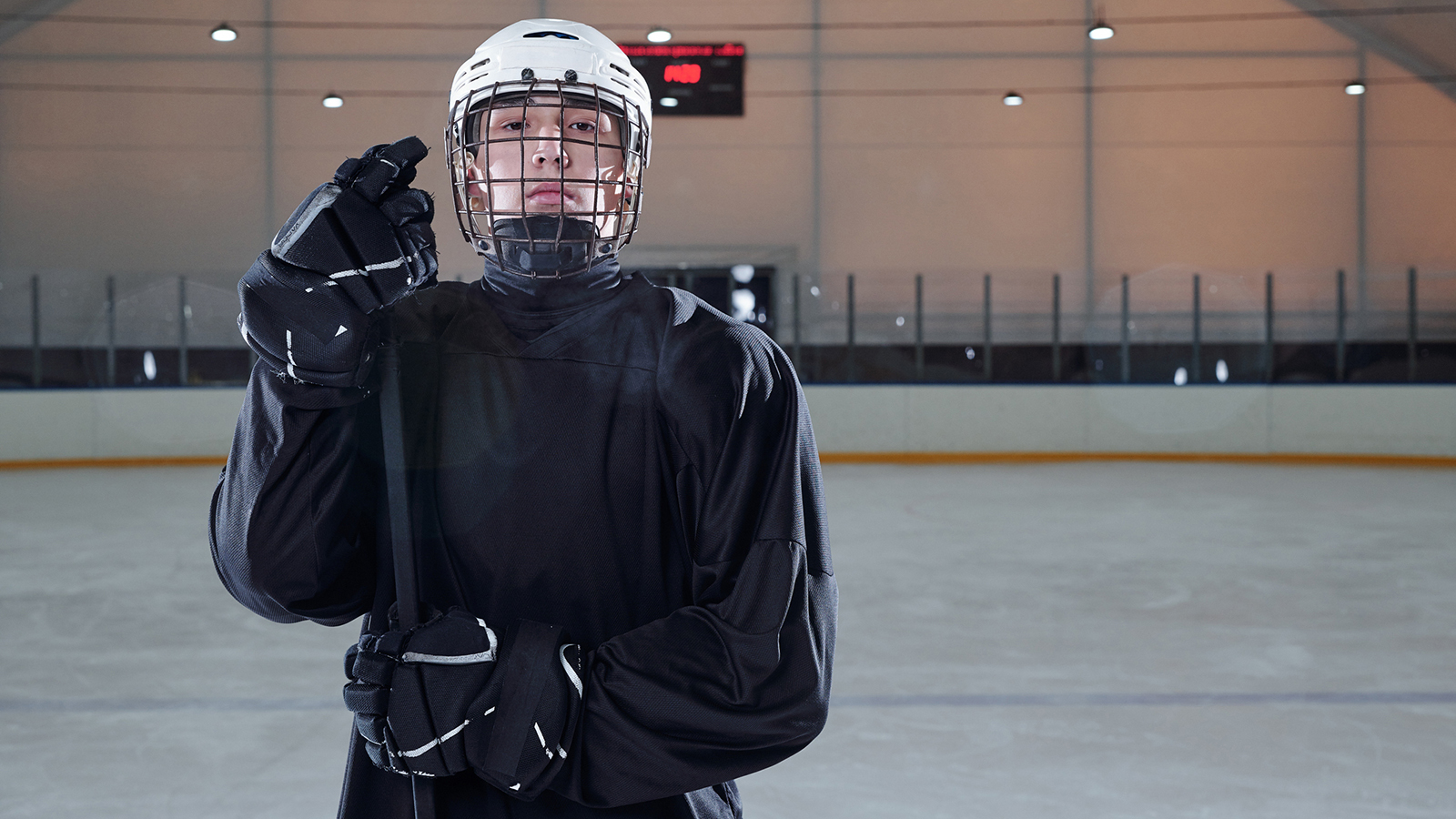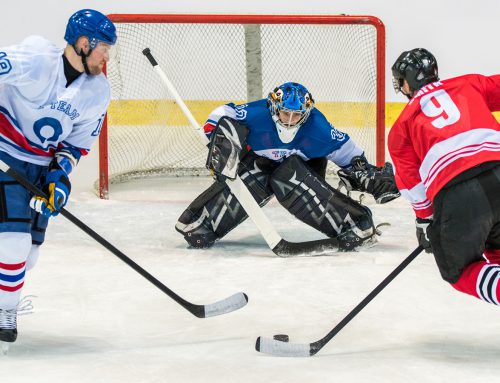The top six tips that you need to know and practice to become an elite hockey trainer who gets the best results for all of the hockey players who comes your way.
The world of hockey training is continuing to grow at a fast rate, and this is a great thing because we are all learning more about how to properly train hockey athletes every single day.
Coaches and parents are respecting how big of an impact the dryland training you perform within your program has on your on-ice skating speed, conditioning, agility, and overall performance.
How you perform on the ice has everything to do with how well you prepare off the ice. The hockey coaches handbook has many tricks, tips, and strategies in it, but here are my top five tips to take your coaching to an elite level.
#1: Meet Them Where They Need To Be Met
The world of social media has given many people access to example exercises and workouts from professional hockey players who are at the highest possible level in terms of training stimulus and predictable adaptation.
You will see things such as:
- Sidney Crosby’s leg exercise will blow your mind!
- Check out Patrick Kane’s new stickhandling drill!
- Use Ovechkin’s explosive speed workout!
Among many other examples, you could see floating around every day.
These clickbait approaches work well to gather traffic, but it’s not something real coaches should fall for. Instead, real coaches understand that you need to meet the athlete where they are ready to be met.
Advanced workouts for a beginner or intermediate trainee will not get them to their end goal quicker, and honestly, it normally slows down the process and puts them at an unnecessary risk for injury.
Always remember that what the elite athletes are doing today with their training does not represent the protocols they followed in order to get them to where they’re at. Read that three times.
#2: Understand Real Sport Specific Training for Hockey
Strength is a physical quality that is very specific, meaning the gains in strength seen in an exercise that you’re doing are always greatest in that specific exercise.
So, even though strength does transfer to other movements (for example, a squat improves your jump height), the movement you did in the first place will always receive the most strength gain (you will gain more in the squat than you will in the jump).
The degree to which you see an athletic movement improve after making strength gains with a “gym exercise” is what we would call strength transfer. Although the more popular term for this phrase is “sport-specific training.”
Strength transfer depends a lot on the similarity of exercises and movements across all of the ways strength can transfer, and not just the movement pattern.
However, since the movement pattern is the easiest to see, this tends to get talked about the most, and therefore, replicated the most through embarrassingly “specific” hockey functioning training.
For example, tying a stick to a cable tower and doing resisted wrist shots couldn’t be more ridiculous and useless for hockey players, yet the movement pattern appears similar, so it is easy to sell on its supposed transferability to an on-ice setting.
When the term “functional training” started gaining massive popularity, strength coaches stopped talking about how to figure out which exercises transferred best to hockey because it was assumed that the movement pattern was the only thing that mattered.
Don’t get me wrong, movement pattern plays a role in transferability, but it doesn’t play the only role.
Within the framework of utilizing sport-specific exercises for hockey, there are eight different ways in which you can choose an exercise that is going to be predictably beneficial for hockey performance:
- Contraction emphasis (eccentric vs. concentric)
- Velocity
- Joint angle
- Time under tension
- Stability of working structure(s) during movement
- External load stimulus (weight, band, medicine ball, etc.)
- Vector
- Targeted muscle groups and energy systems
When you break that list down, you can begin to take the “movement pattern” blinders off and instead analyze the exercise that you’re using and to what degree it’s going to transfer to a game setting.
This is real sport-specific training and represents why so many excellent exercises for hockey performance don’t actually look like the sport at all (pull-ups, anti-rotation core work, squats, deadlifts, etc.)
#3: Understand Hockey Periodization
The problem with a lot of hockey coaches’ programming is how often they get trapped in the world of pin-balling. By pin-balling, I am referring to bouncing from one program to the next with really no methodical approach to a long-term end result. It is moving from one cool-looking hockey training program to the next or one magazine hockey workout to the next. They sound like they match your goals, but does the “big picture” of your long-term periodization strategy make any logical and progressive sense overtime to get the desired end result?
Every phase should always build upon the phase previous to it in some way, shape, or form. Anything less becomes a situation where you are exercising but not training. The general population can exercise for health purposes, sure. But, athletes need to train to get a specific and desired end result, and this training must be sequenced in a way that manages fatigue and peaks performance.
Pin-balling is totally fine for the general population. The general population can do whatever they want. If they’re just there to get a health benefit and exercise, they need-not the yearly periodized training structure of somebody who wants maximum results.
This is the real difference between exercising and training. If you’re an athlete or somebody looking to push your limits, your long-term sequenced periodization structure should be sound and good to go with laid out goals for each phase that make sense both where they are placed in the year’s schedule, but also to how it is going to transfer to your ultimate goal.
One phase building upon the next using the scientific principles of sports training, one brick being laid at a time. You can look at doing random program designs throughout the year, like building your own car from the junkyard. You have to go out and get different pieces from different models, and in the end, you might actually get the engine to run. Now compare that to a Rolls Royce made entirely in-house by hand with premium parts using a predetermined plan for the structure.
Who’s going to perform better in the end, get to structure completion without any plateaus, and get to their end result faster? The Franken-car that was put together randomly from random scraps, or the methodically designed Rolls Royce? The Rolls Royce will win ten times out of ten, just like a periodized yearly structure for hockey players who control volume, intensity, and frequency appropriately across the in-season, post-season, off-season, and pre-season. Build your entire year of training, leave the pin-balling for the amateurs.
#4: Build Your Skills, Not Your Tools
Hockey training program design is a skill, and you can’t buy skill no matter how expensive your equipment is.
Think about a carpenter and how he/she is skilled in the art of carpentry. They can build and fix a wide variety of things because they are skilled carpenters. If they need a hammer, they get a hammer. If they need a screwdriver, they use a screwdriver. A tool is only ever as good as it can be applied, and every carpenter knows this. This is where our industry gets things totally wrong. You will never see a carpenter get certified in the screwdriver or certified in using a hammer. That sounds silly; instead, he is just certified as a carpenter and then uses the tools at his disposal as he/she sees fit to get the job done in an efficient way. Yet, in our industry, you will see people get certified in the kettlebell, or certified in the medicine ball, or certified in using bands/chains. This is bizarre and completely backward because when the only tool you have is a hammer, everything looks like a nail.
The coach who is certified in a specific tool will try to apply it where it is not optimally applicable, and the only one who suffers is the hockey player who is stuck running the dumb training program that was prescribed to them. Hockey training program design is a skill that is founded on understanding the principles and variables of training. No new “hockey-specific” exercise equipment will ever replace that.
#5: Effective Communication
It’s not always about being informative. It’s about being effective.
You may be the smartest programmer and skills coach in the world, but in order to create change in your team or change in your athlete, they need to be picking up what you’re putting down in a way that truly resonates with them.
- “Krebs cycle metabolic pathways”… how about just energy?
- “Meeting the leucine threshold”… how about just “Go eat 4oz of chicken.”
- “Oxidative phosphorylation”… how about just fat burning?
- “Body composition alteration”… how about just muscular and lean?
I am super grateful for all of the people that have enjoyed my podcasts, videos, and articles. The feedback I most often receive has nothing to do with the complicated science and has everything to do with these two factors:
- They say I explain things in a way they could understand.
- They say I provided actionable items that they felt comfortable and confident using.
Information is not an impressive coaching characteristic if you can’t communicate it clearly. Clarity brings actions. Complexity brings confusion. This is what separates “programmers” from real coaches.
Clear communication always beats trying to sound smart, and sounding smart doesn’t mean you’re an effective coach.
Original Article Posted on stack.com



